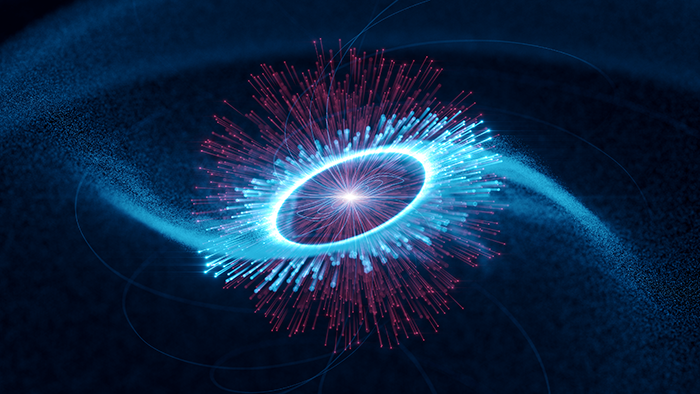
Pulsar emits highest-energy radiation ever observed
Pulsars, small, very dense dead stars, emit electromagnetic radiation in the form of beams that sweep through space at regular intervals, rather like cosmic lighthouses. Now, recent observations of one of the nearest pulsars to Earth, the Vela pulsar, have caused a major stir in the scientific community: radiation around 200 times more energetic than any previously detected from this source has been detected at the H.E.S.S.1 observatory by scientists from the CNRS2 and CEA, working as part of an international team. This remarkable discovery is hard to reconcile with the commonly accepted theory that particles produced near the surface of pulsars are accelerated along their magnetic field lines out to the edges of their magnetosphere. These findings, to be published in the journal Nature Astronomy, shake up our current theories about the way pulsars behave, and pave the way for a better understanding of the extreme acceleration processes at work in highly magnetic astrophysical objects.
Watch a video presentation of this work.
© Science Communication Lab for DESY

© Science Communication Lab for DESY
- 1The High Energy Stereoscopic System (H.E.S.S.), to which the CNRS and the CEA contribute, is an array of five telescopes located in Namibia used to study cosmic gamma rays.
- 2The main French laboratories involved are as follows: Laboratoire Astroparticule et cosmologie (CNRS/Université Paris Cité), Laboratoire Leprince Ringuet (CNRS/École polytechnique), Laboratoire univers et théories (CNRS/Observatoire de Paris – PSL), Laboratoire physique nucléaire et hautes énergies (CNRS/Sorbonne Université), Laboratoire d'Annecy de physique des particules (CNRS/Université de Savoie Mont Blanc), Centre de physique des particules de Marseille (CNRS/Aix-Marseille Université), Laboratoire Univers et particules de Montpellier (CNRS/Université de Montpellier), Laboratoire de physique des 2 infinis – Bordeaux (CNRS/Université de Bordeaux), Laboratoire d'astrophysique de Bordeaux (CNRS/Université de Bordeaux), Institut de recherche sur les lois fondamentales de l'Univers (CEA).
Discovery of a Radiation Component from the Vela Pulsar Reaching 20 Teraelectronvolts.
The H.E.S.S. collaboration. Nature Astronomy, 5 october 2023.
DOI : https://doi.org/10.1038/s41550-023-02052-3
Free access


